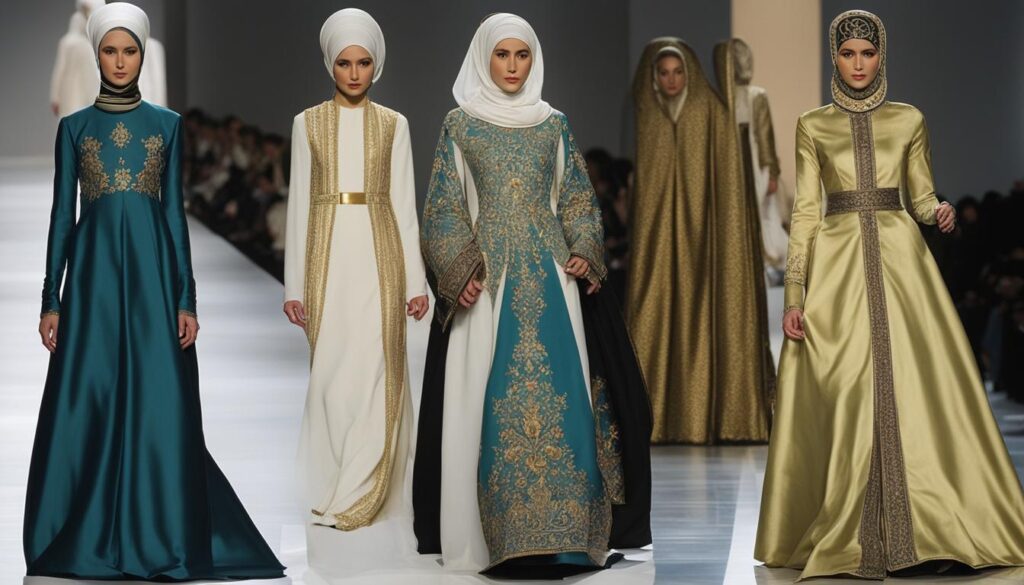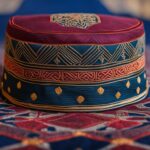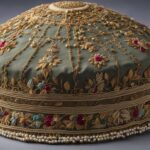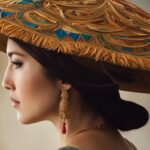Browse a wide selection of high-quality prayer dresses, including abayas, hijabs, and chadors. These garments are essential for enhancing your spiritual practice and representing the culture to the fullest. With options from various Muslim countries, you can find the perfect prayer dress that suits your style and preferences. Shop now for wholesale prices and fashionable styles.
Key Takeaways:
- Prayer dresses such as abayas, hijabs, and chadors are important tools for enhancing spiritual practice.
- These garments symbolize modesty, piety, and respect for religious traditions.
- There are variations of prayer attire among different sects, but the core purpose remains the same.
- Prayer dresses are typically made from high-quality materials such as pure cotton and silk.
- Over time, prayer dresses have evolved to incorporate modern fashion trends while staying true to their traditional roots.
Understanding the Importance of Prayer Tools in Islamic Practice
In Islamic practice, prayer tools play a significant role in facilitating a devout experience. These tools are essential for enhancing the spiritual connection and creating an atmosphere of devotion. The main prayer tools include prayer dresses, prayer beads, prayer rugs, and turbans – each serving a specific purpose in the worship process.
Prayer dresses like abayas, hijabs, and chadors symbolize modesty, piety, and respect for religious traditions. They are worn by individuals during prayer sessions, representing their commitment to the faith and adherence to Islamic guidelines. These garments not only contribute to a sense of personal reverence but also foster a collective identity within the Muslim community.
Prayer beads, also known as misbaha or tasbihs, are used for counting the repetition of prayers and supplications. These beads have spiritual significance and serve as a tool to maintain focus and concentration during devotion. The act of moving the beads through the fingers allows the worshipper to enter a state of tranquility and connection with their Creator.
Prayer rugs, also called sajjadah, provide a clean and dedicated space for prayer. These rugs are traditionally used to ensure a pure and sacred environment during worship. They are often adorned with intricate designs and patterns, reflecting the rich cultural heritage of the Islamic world. Prayer rugs come in various styles and sizes, catering to the diverse needs and preferences of individuals.
Turbans, known as imamah, are worn by individuals in some sects of Islam during prayer and religious ceremonies. These head coverings have historical significance and symbolize religious authority and leadership. Turbans come in different colors and styles, representing different sects and cultural traditions.
The variations among sects in the use of prayer tools reflect the diverse interpretations and practices within the Islamic faith. While the core purpose of these tools remains the same, the specific traditions and customs associated with their use may differ. However, regardless of the sect, prayer tools hold deep symbolic meaning and contribute to a profound spiritual experience for worshippers.
| Prayer Tool | Symbolism |
|---|---|
| Prayer Dresses | Modesty, piety, respect for religious traditions |
| Prayer Beads | Focus, concentration, spiritual connection |
| Prayer Rugs | Purity, sacred space, cultural heritage |
| Turbans | Religious authority, leadership, cultural identity |
Prayer Dresses: A Closer Look at Materials and Designs
When it comes to prayer dresses, materials and designs play a crucial role in ensuring comfort, adherence to religious guidelines, and personal style. Prayer dresses, including abayas, hijabs, and chadors, are typically crafted from high-quality materials such as pure cotton and silk. These fabrics not only provide a smooth and comfortable wearing experience but also allow for breathability, making them ideal for prayer.
Designs of prayer dresses vary widely, offering individuals the opportunity to express their personal taste while maintaining modesty. Traditional styles in soft pastels are commonly seen, reflecting cultural and religious aesthetics. However, there has been a shift towards more contemporary designs with solid colors and intricate patterns, catering to those who seek a more modern touch.
It is important to note that prayer dress designs may differ depending on regional and cultural influences. For instance, prayer dresses from Saudi Arabia often feature elegant embellishments and embroidery, while those from Iran may incorporate vibrant colors and unique draping styles. These regional variations allow individuals to choose a prayer dress that resonates with their cultural background and personal preferences.
Making a Fashion Statement with Prayer Dresses
Prayer dresses not only serve a religious purpose but also offer an avenue for self-expression and fashion. In recent years, the fashion industry has recognized the growing demand for stylish and fashionable prayer dresses. As a result, designers are now incorporating trendy elements such as asymmetrical cuts, ruffles, and pleats into prayer dress designs.
This shift towards more fashion-forward prayer dresses reflects the evolution of modest fashion and the desire for women to feel confident and empowered in their religious attire. By embracing these modern designs, individuals can make a fashion statement while adhering to religious guidelines and showcasing their cultural identity.
In conclusion, materials and designs are key aspects of prayer dresses. From the choice of fabric to the style of the dress, individuals have the opportunity to select prayer dresses that not only reflect their religious beliefs but also align with their personal taste and cultural heritage. Whether opting for traditional styles or embracing more contemporary designs, prayer dresses offer a way to enhance the spiritual practice while making a fashion statement.
| Materials | Designs |
|---|---|
| Pure cotton | Traditional styles in soft pastels |
| Silk | Solid colors and intricate patterns |
| Embellishments and embroidery | Asymmetrical cuts, ruffles, and pleats |
| Vibrant colors and unique draping styles |
Evolution of Prayer Dresses Over Time
Prayer dresses, including abayas, hijabs, and chadors, have undergone significant changes over time, embracing modern fashion trends while staying true to their traditional roots. These changes reflect the ever-evolving landscape of modest fashion and the desires of individuals to express their personal style within religious guidelines.
In the past, prayer dresses were mostly simple and plain, designed to prioritize modesty and functionality. However, as fashion and culture evolved, prayer dresses began to incorporate intricate designs, vibrant colors, and modern silhouettes. Today, individuals can choose from a wide range of prayer dresses that cater to diverse tastes and preferences.
One notable evolution is the use of different fabrics. While prayer dresses were traditionally made from cotton, they now feature luxurious materials such as silk, chiffon, and lace. These fabrics not only enhance the aesthetics of the prayer dresses but also provide a comfortable and luxurious wearing experience for the individuals.
To better illustrate the evolution of prayer dresses, below is a table that showcases the changes in design and materials:
| Time Period | Design | Materials |
|---|---|---|
| Traditional Era | Simple and plain | Cotton |
| Modern Era | Intricate designs, vibrant colors | Silk, chiffon, lace |
This table highlights the shift from simplicity to diversity in prayer dress designs and the use of high-quality materials to enhance the overall aesthetic appeal.

The Impact of Globalization
The evolution of prayer dresses is closely tied to the influence of globalization. With increased connectivity and cultural exchange, individuals now have access to prayer dresses from different parts of the world. This has resulted in a fusion of styles and designs, offering a broader range of choices and empowering individuals to express their unique identities.
In conclusion, the evolution of prayer dresses reflects the dynamic nature of fashion and the desire of individuals to incorporate their personal style into their religious practices. From simple and plain designs to intricate patterns, and from cotton to luxurious fabrics, prayer dresses have evolved to cater to the diverse needs and preferences of individuals. This evolution showcases the rich heritage and cultural significance of prayer dresses, while also embracing the influence of modern fashion trends.
Lesser-Known Prayer Tools and Accessories
In addition to prayer dresses, there are other lesser-known prayer tools and accessories that individuals may use during their spiritual practice. These tools serve specific purposes in enhancing the prayer experience and are often steeped in cultural and religious significance.
Prayer Beads (Misbaha)
Prayer beads, also known as misbaha or tasbih, are commonly used by Muslims during their prayers. They consist of a string of beads that are used to keep count of the repetitions of phrases, such as the recitation of the name of Allah or other devotional prayers. The use of prayer beads helps to maintain focus and concentration during prayer, allowing individuals to deepen their spiritual connection.
Prayer Rugs (Sajjadah)
Prayer rugs, known as sajjadah, are used to create a clean and dedicated space for prayer. They provide a comfortable and clean surface for individuals to kneel and prostrate during their prayers. With beautiful designs and intricate patterns, prayer rugs not only serve a functional purpose but also add aesthetic beauty to the prayer space.
Tasbihs (Islamic Rosaries)
Tasbihs, or Islamic rosaries, are used by Muslims to engage in the remembrance of Allah through repetitive recitation. They consist of a string of beads, usually of 99 or 33 beads, and are used to recite dhikr (remembrance) or other prayers. Tasbihs serve as a reminder of the importance of constant remembrance of Allah and facilitate a deeper connection with the Divine.
Turbans (Imamah)
Turbans, also known as imamah, are worn by some Muslim men during prayer as a sign of respect and humility. The turban is carefully wrapped around the head and represents a symbol of religious devotion and leadership. It is often worn by imams or leaders within the Islamic community.
| Prayer Tool | Description |
|---|---|
| Prayer Beads (Misbaha) | Used to keep count of repetitions during prayer and maintain focus. |
| Prayer Rugs (Sajjadah) | Provide a clean and dedicated space for prayer, along with aesthetic beauty. |
| Tasbihs (Islamic Rosaries) | Used for repetitive recitation, promoting constant remembrance of Allah. |
| Turbans (Imamah) | Worn by some Muslim men as a symbol of respect and religious devotion. |
Where to Find a Wide Range of Prayer Dresses
If you’re looking for a wide range of prayer dresses, including abayas, hijabs, and chadors, you can find them on various online platforms such as Alibaba.com and AliExpress. These platforms offer a vast selection of prayer dresses from different manufacturers and designers worldwide. Whether you’re looking for wholesale options or individual pieces, these platforms provide options for all your prayer dress needs.
Alibaba.com is a leading global wholesale marketplace where you can discover an extensive collection of prayer dresses in various styles, colors, and sizes. From trendy and modern abayas to traditional and elegant chadors, you’ll find the perfect prayer dress to suit your preferences. With competitive prices and reliable suppliers, Alibaba.com ensures a seamless shopping experience.
Similarly, AliExpress is another popular online platform that offers a wide range of prayer dresses from different sellers. You can explore a diverse selection of abayas, hijabs, and chadors, each with its own unique design and quality. AliExpress also provides customer reviews and ratings, allowing you to make an informed decision before making a purchase.
| Platform | Selection | Prices | Reviews |
|---|---|---|---|
| Alibaba.com | Wide range of prayer dresses | Competitive | Reliable suppliers |
| AliExpress | Diverse selection of prayer dresses | Affordable | Customer reviews and ratings |
When shopping for prayer dresses online, it’s important to consider factors such as the reputation of the sellers, product quality, and customer reviews. Take your time to browse through the available options, read product descriptions, and compare prices to ensure you find the best deal. Whether you’re seeking a traditional prayer dress or a more modern and fashionable option, these online platforms offer a convenient way to explore a wide variety of prayer dresses.
Cultural Significance of Prayer Dresses
Prayer dresses hold immense cultural significance within Islamic communities. These garments, such as abayas, hijabs, and chadors, not only serve as attire for prayers but also represent adherence to religious traditions, modesty, and respect. Worn by women during various religious and cultural occasions, prayer dresses showcase the rich diversity and heritage of Muslim attire.
The cultural significance of prayer dresses goes beyond religious practice. They symbolize a shared identity and a sense of belonging within the community. Through the choice of prayer dress styles and designs, individuals express their personal connection to Islam and their cultural heritage. Prayer dresses foster a sense of unity, reinforcing the values of modesty, piety, and respect for religious customs.
Prayer dresses also play a role in preserving cultural traditions. The variety of prayer dress styles from different Muslim countries reflects the unique cultural heritage and regional influences. By wearing prayer dresses, individuals honor and celebrate their roots, showcasing the beauty and diversity of Islamic cultures.
Traditional vs. Contemporary Prayer Dresses
While prayer dresses continue to embody cultural significance, their designs have evolved over time to incorporate modern fashion trends. Traditional prayer dresses often feature flowing silhouettes, intricate embroideries, and soft pastel colors, reflecting a more conservative style. However, contemporary prayer dresses have embraced new designs, including solid colors, bold patterns, and modern cuts, catering to the changing preferences and personal styles of individuals.
| Traditional Prayer Dresses | Contemporary Prayer Dresses |
|---|---|
| Flowing silhouettes | Modern cuts and styles |
| Intricate embroideries | Bold patterns and prints |
| Soft pastel colors | Wide range of color options |
Prayer dresses not only serve as religious attire but also represent a shared cultural identity within Islamic communities.
The evolution of prayer dresses reflects the dynamic nature of modest fashion and the desire for self-expression within religious guidelines. Whether traditional or contemporary, prayer dresses continue to hold cultural significance, allowing individuals to honor their heritage while embracing their own unique style.
The Role of Prayer Dresses in Empowering Women
Prayer dresses, such as abayas, hijabs, and chadors, play a significant role in empowering women within the Islamic faith. These garments are not merely pieces of clothing; they represent a powerful symbol of self-expression, autonomy, and cultural identity. By donning a prayer dress, women assert their beliefs and values while challenging societal stereotypes and expectations.
Wearing a prayer dress allows women to embody modesty, piety, and their devotion to religious traditions. It serves as a visual reminder of their dedication to spiritual practice and their commitment to the principles of Islam. By embracing prayer dresses, women establish a sense of unity and solidarity among themselves, creating a supportive community and empowering one another in their faith journeys.
Furthermore, prayer dresses provide women with the freedom to express their personal style and creativity while adhering to religious guidelines. These garments come in various designs, colors, and fabrics, allowing women to choose prayer dresses that resonate with their individual preferences. This ability to make choices and express themselves fosters a sense of empowerment and self-confidence, enabling women to fully embrace their identities as Muslim women.
“The prayer dress is not just a piece of fabric; it is a symbol of our strength, our faith, and our unity as women. When we wear it, we stand tall, grounded in our beliefs, and ready to face the world on our terms.”
In conclusion, prayer dresses are a powerful tool for empowering women within the Islamic faith. They provide a means of self-expression, challenge societal norms, and foster a sense of unity and solidarity. By embracing prayer dresses, women assert their autonomy and confidently navigate the intersection of faith and culture.
| Role of Prayer Dresses in Empowering Women | Benefits |
|---|---|
| Symbolize Modesty and Piety | Remind women of their dedication to spiritual practice and adherence to religious traditions. |
| Promote Unity and Solidarity | Create a supportive community and empower women in their faith journeys. |
| Encourage Self-Expression | Allow women to express their personal style while adhering to religious guidelines. |
| Foster Empowerment and Confidence | Enable women to embrace their identities and challenge societal stereotypes. |
Conclusion
In conclusion, prayer dresses are essential tools that enhance the spiritual practice of Muslims. These garments, including abayas, hijabs, and chadors, symbolize modesty, piety, and respect for religious traditions.
Made from high-quality materials, prayer dresses have evolved to incorporate modern fashion trends while staying true to their traditional roots. The use of pure cotton and silk ensures a smooth and comfortable wearing experience. The designs range from traditional styles in soft pastels to solid colors, allowing individuals to express their personal taste while adhering to religious guidelines.
Moreover, lesser-known prayer tools and accessories further enrich the prayer experience. Prayer beads (misbaha), prayer rugs (sajjadah), tasbihs (Islamic rosaries), and turbans (imamah) serve specific purposes in enhancing devotion and are often steeped in cultural and religious significance.
By embracing prayer dresses, individuals express their personal style while upholding religious guidelines and fostering a sense of empowerment and cultural identity. Whether you are looking for wholesale options or individual pieces, explore the wide range of prayer dresses available today to find the perfect one that resonates with your values and beliefs.
FAQ
What is the significance of prayer dresses in Islamic practice?
Prayer dresses, such as abayas, hijabs, and chadors, symbolize modesty, piety, and respect for religious traditions. They create an atmosphere of devotion and spiritual connection.
What materials are prayer dresses typically made from?
Prayer dresses are typically made from high-quality materials such as pure cotton and silk, providing a smooth and comfortable wearing experience.
Are prayer dresses available in different designs and styles?
Yes, prayer dresses come in a variety of designs, ranging from traditional styles in soft pastels to solid colors, allowing individuals to express their personal taste while adhering to religious guidelines.
How have prayer dresses evolved over time?
Prayer dresses have incorporated modern fashion trends while staying true to their traditional roots, catering to the diverse needs and preferences of individuals.
Are there other prayer tools and accessories besides prayer dresses?
Yes, there are other prayer tools and accessories such as prayer beads (misbaha), prayer rugs (sajjadah), tasbihs (Islamic rosaries), and turbans (imamah), which serve specific purposes in enhancing the prayer experience.
Where can I find a wide range of prayer dresses?
You can find a wide range of prayer dresses, including abayas, hijabs, and chadors, on various online platforms such as Alibaba.com and AliExpress.
What is the cultural significance of prayer dresses?
Prayer dresses hold cultural significance within Islamic communities as they represent adherence to religious traditions, modesty, and respect. They showcase the rich diversity and heritage of Muslim attire.
How do prayer dresses empower women within the Islamic faith?
Prayer dresses provide an avenue for self-expression, allowing women to embody their religious beliefs and cultural heritage with confidence. They challenge societal stereotypes and foster a sense of empowerment and unity among women.








